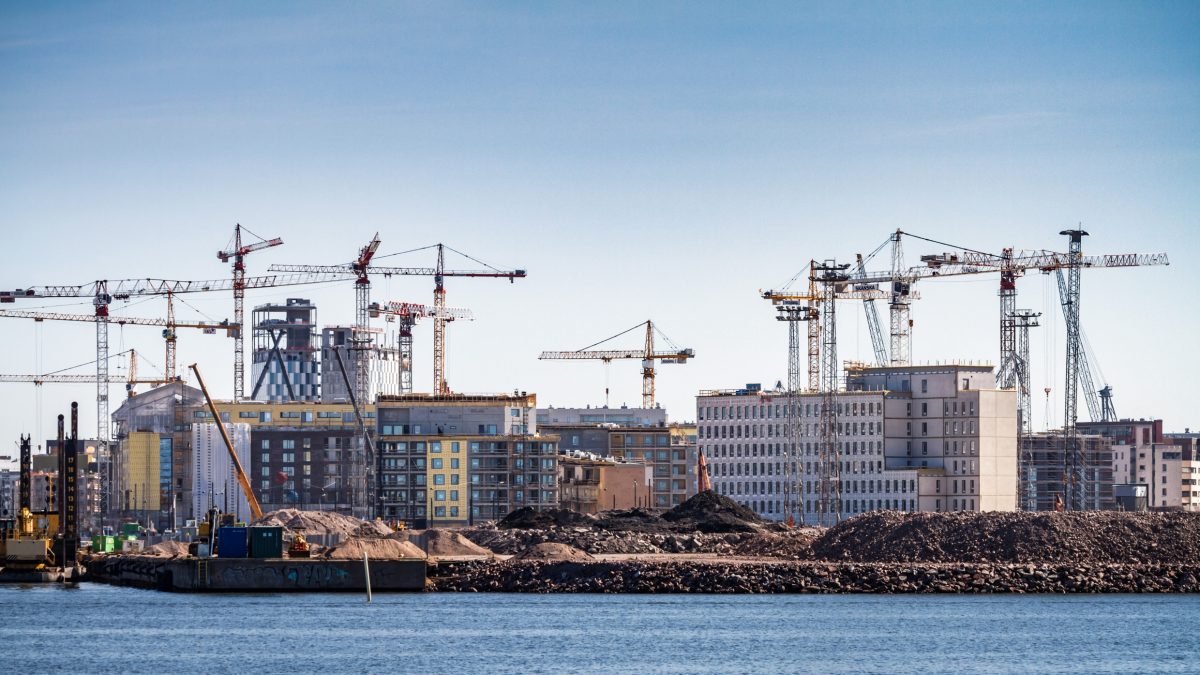Construction
Carbon footprint of construction
The City of Helsinki guides the lifecycle carbon footprint of house building in the urban area, for example, through land use planning, planning regulations, plot transfer terms, plot and construction competitions and, particularly in its own construction projects, through planning guidelines.
The life cycle carbon footprint of detailed planning areas is examined in connection with the detailed planning using the Planect assessment method developed by Sitowise Oy. City planning and detailed planning affect the emissions from preconstruction, infrastructure construction and foundation engineering, for example, through the foundation engineering conditions of the areas covered by the plan. Planning also indirectly affects the emissions from the buildings constructed in the area through the plan regulations as well as the quantities of the buildings permitted on the plots in the area.
In the summer of 2023, Helsinki became the first city in Finland to introduce a limit value for the lifecycle carbon footprint of new residential blocks of flats. The limit value for residential blocks of flats is used as a requirement in new local detailed plans. In addition to the plans, the city can set out carbon footprint requirements, for example, in plot competitions and plot transfer terms. The introduction of the limit value was based on the need to control the emissions from residential construction in a material and technology-neutral manner, because the high volume of residential construction makes it a significant source of emissions. In the future, the aim is to set limit values also for other use categories.
The city has conducted lifecycle carbon footprint calculations in its own house building projects (housing production and public service buildings) for several years. The calculations promote low-carbon construction projects, for example, by producing information on the emission impacts of different design solutions to support decision-making. The results of all projects are collected into one database. The database enables comparing the results of an individual project with other similar projects, as well as assessing the accuracy of the data. The collected data can also be used for determining limit values. The city can also use carbon footprint, at its discretion, as a minimum requirement and quality assessment criterion in projects that are based on construction competitions.

Soil improvement and infrastructure construction
Soil improvement measures are often carried out on plots and in public areas before the actual construction begins as a preconstruction phase. The typical soil improvement method used on soft soil areas is deep stabilisation, which reduces settlements during use and improves stability. The City of Helsinki only uses binders based on recycled materials for soil improvement, which can reduce the carbon dioxide emissions from the soil improvement by at least half compared to earlier methods, while also saving costs. This is one of the measures of the Carbon Neutral Helsinki emissions reduction programme.
Another aim is to halve the emissions from the soil improvement of Malminkenttä. Malminkenttä serves as a test site for several low-emission soil improvement methods, such as soil improvement using wooden piles , which can permanently bind carbon to the soil. The city is also participating in Aalto University’s Demico research project, which investigates future possibilities for sequestering carbon dioxide in the soil in connection with soil improvement,
In soil improvement and infrastructure construction, the promotion of circular solutions starts at the design stage, and with the help of mass coordinating, the carbon dioxide emissions caused by transportation of excavated soil masses can be reduced.